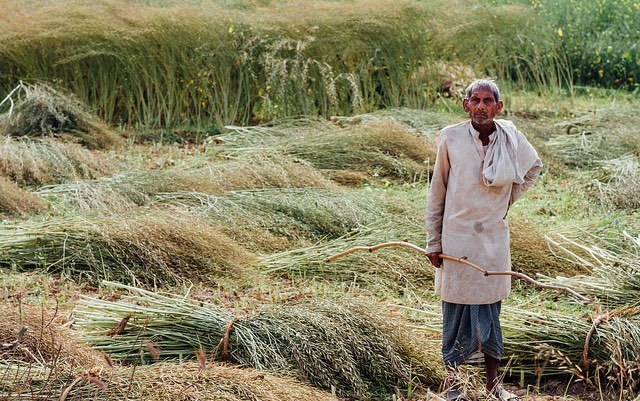A sweeping wave of loan waivers for farmers in India has generated serious debates across the country on their economics and likely outcomes. To date, 12 states have announced loan waivers amounting to more than $28 billion.
This cannot be a solution to India’s ongoing agrarian crisis. Instead, the government must look for long-term answers. There is also the danger of intense competition among political parties promising loan waivers—projecting themselves as the protectors of farmers—becoming the norm in the days before each election.
India has a long history of loan waivers. In 1990, the then-Prime Minister announced an agricultural debt relief scheme totaling $1.4 billion. In the same year, a similar scheme was announced by then Chief Minister of Haryana, waiving $32 million of farm loans by banks and cooperatives.
Over the next decade, despite the Reserve Bank of India’s warning of the adverse consequences of such measures, several states resorted to them. In 2008, the United Progressive Alliance-led government announced one of the largest debt waiver schemes in history. The Agricultural Debt Waiver and Debt Relief Scheme waived $8.4 billion spread across 237 districts and reaching 30 million farmers.
Over the next few years, the program received widespread criticism from economists. However, this did not stop state governments from making further loan waiver announcements, and now more than 10 have joined the club.
If loan waivers are truly the solution to agrarian distress, why haven’t they prevented farm incomes from decelerating and farmers from committing suicide?
Ample evidence and research confirm that loan waivers have not increased agricultural productivity and in fact have resulted in an increase in moral hazard among eligible households. The India Comptroller and Auditor General’s report following the 2008 loan waiver program exposed rampant corruption and exclusion and inclusion errors in the identification of beneficiaries. We try to dwell upon this expensive scheme and its desirability from the economic, social and farmers’ welfare perspectives.
Per the latest data available from the Nabard All-India Rural Financial Inclusion Survey (2016-17), only 26 percent of rural households in Chhattisgarh, 35 percent in Madhya Pradesh and 31 percent in Rajasthan availed themselves of loans from any source during 2015-16. The percentage of institutional borrowers was 16, 21, and 19 percent respectively in Chhattisgarh, Madhya Pradesh and Rajasthan. One can see that loan waivers benefit only about one-fifth of agricultural households and create disincentives for those who use their own resources or are unable to avail themselves of institutional loans.
Apart from benefiting mainly institutional borrowers, loan waivers are a heavy drain on the financial resources of both the states and the central government, which may adversely affect public investments in agriculture and irrigation and dissuade private investments.
This has been the case at the central level, with agricultural investments declining in real terms in the last few years. Several studies have shown that facilitating access to institutional credit can increase farmers’ income by 15-20 percent, which can be instrumental in improving their living standards. The amount foregone on waiving loans could give better returns if invested in agricultural research and development, markets, irrigation—or even by enhancing the penetration of institutional credit.
Moreover, frequent loan waivers, which are often politically motivated, erode the rural credit delivery system. This results in a deceleration in the flow of agricultural credit and the perpetual tendency of non-repayment of loans among the borrowers.
Credit, be it from formal or informal sources, plays an indispensable role in the lives of agricultural households. Efforts should be made towards greater financial inclusion for agricultural households, particularly of marginal and small farmers.
To date, about 56 percent of marginal and 48 percent of small farmers (less than 2 ha) fall outside the ambit of rural credit markets. And they will continue to face distress despite state governments’ decisions to dole out their citizens’ hard-earned money to in order to remain in power.
The government should devise other options to address agrarian issues rather than resorting to economically irrational, inefficient, and socially inequitable instruments like loan waivers.
Anjani Kumar is an Research Fellow with IFPRI’s South Asia Region in New Delhi; Seema Bathla is a Professor of Agricultural Economics at Jawaharlal Nehru University. This post first appeared in The Hindu BusinessLine. Opinions are the authors’.







